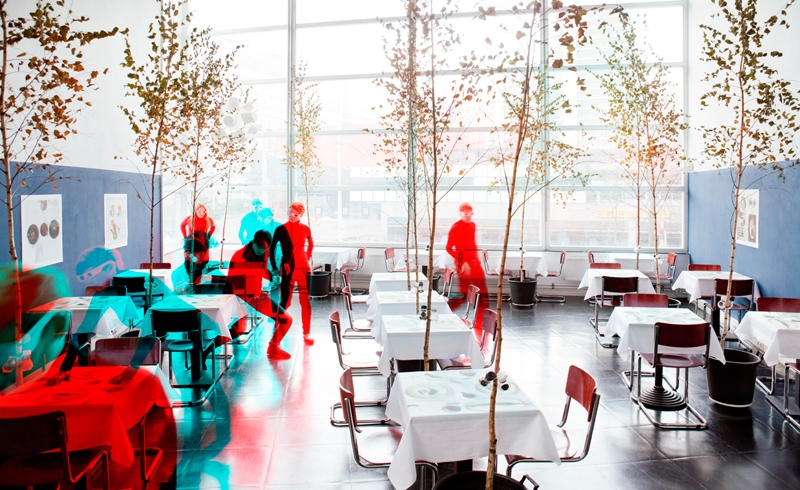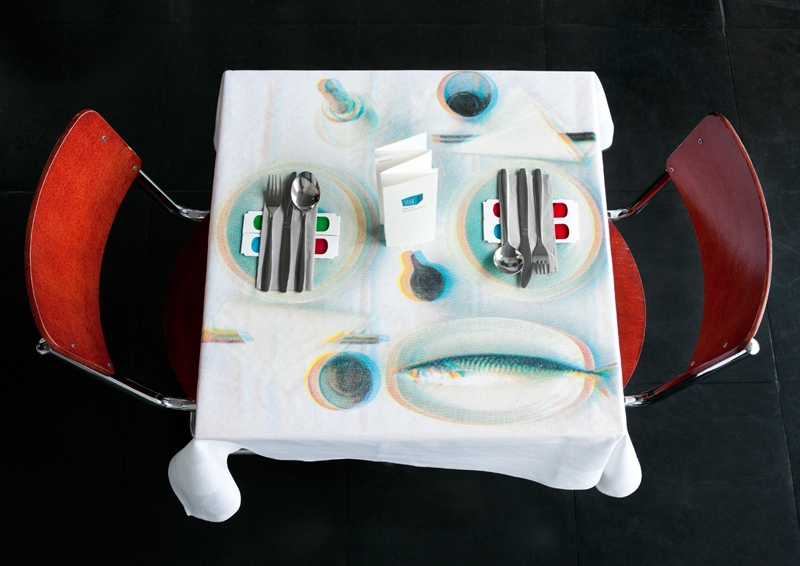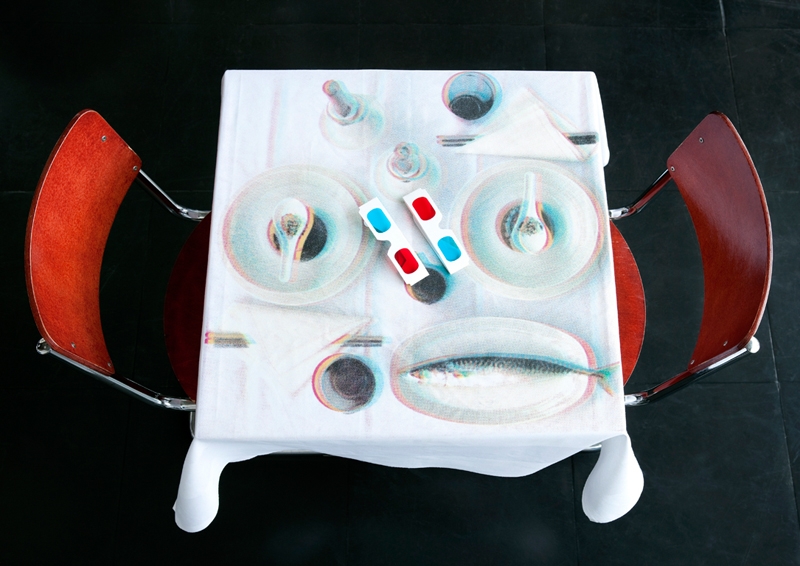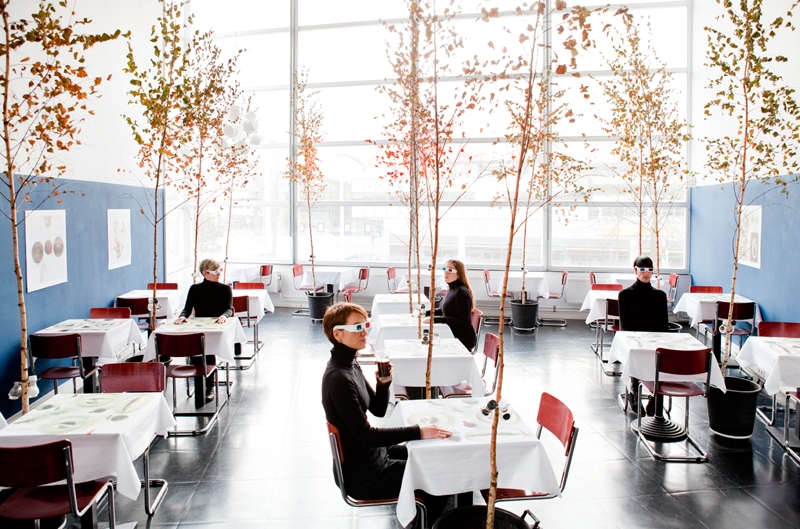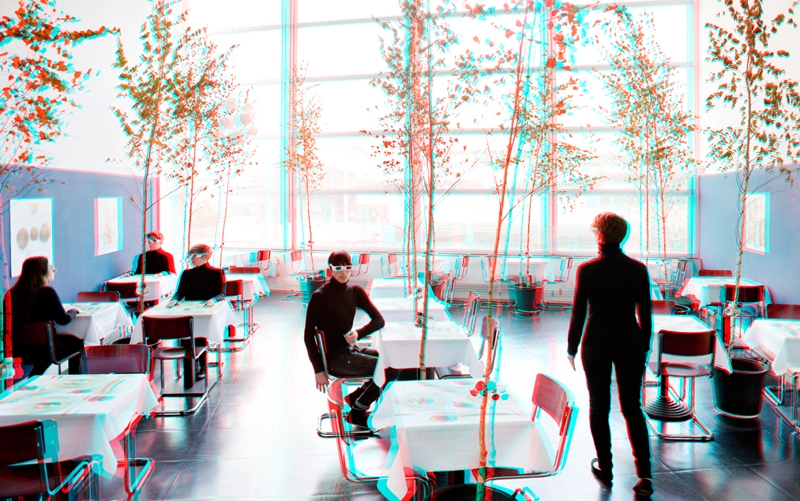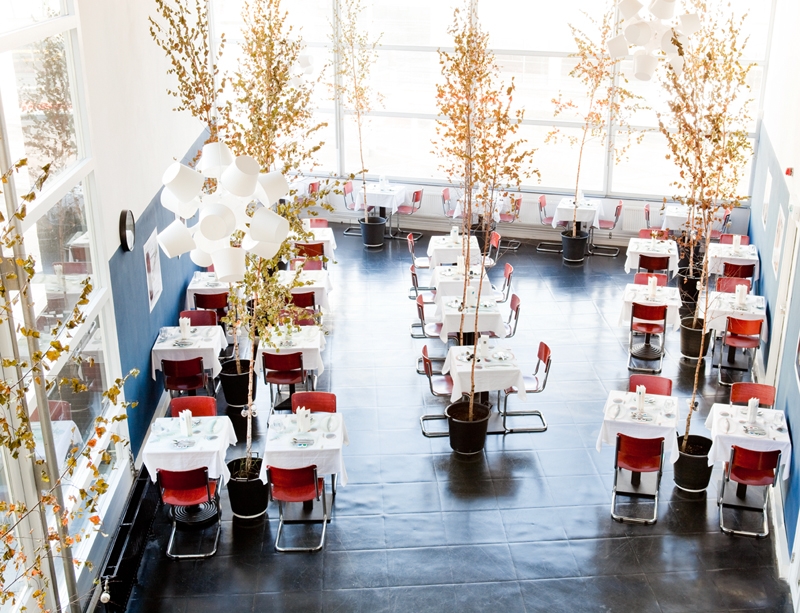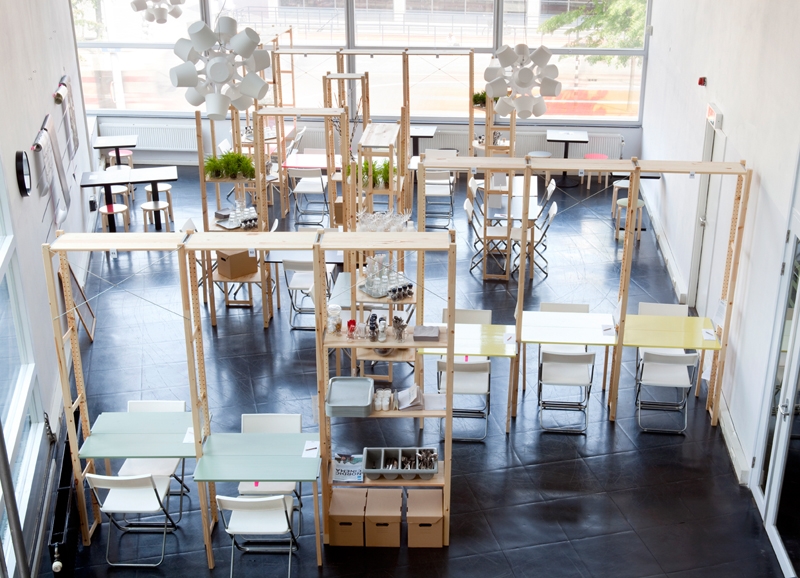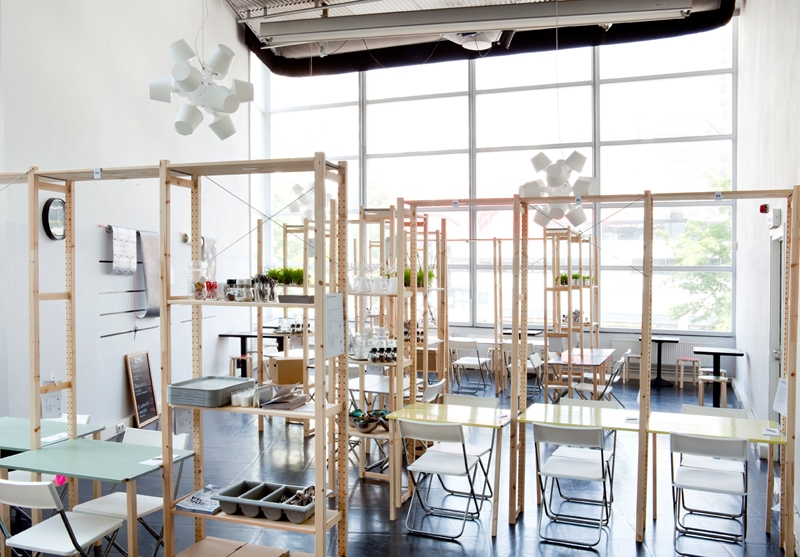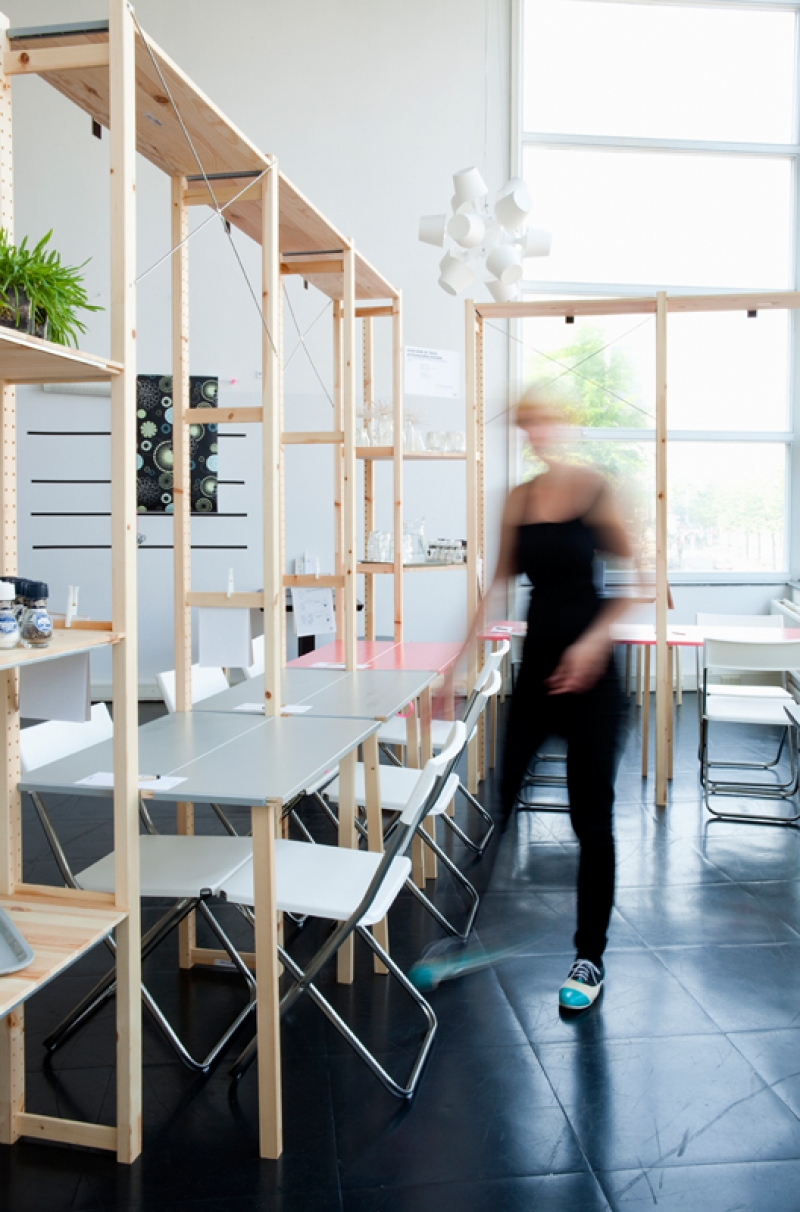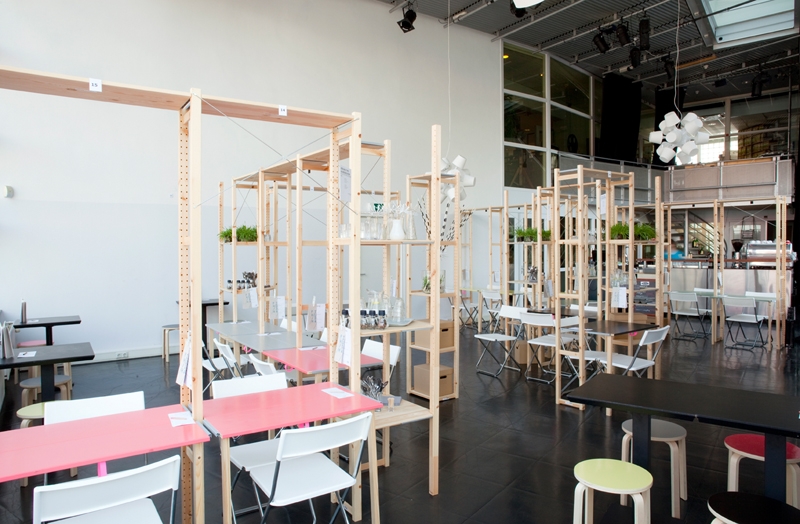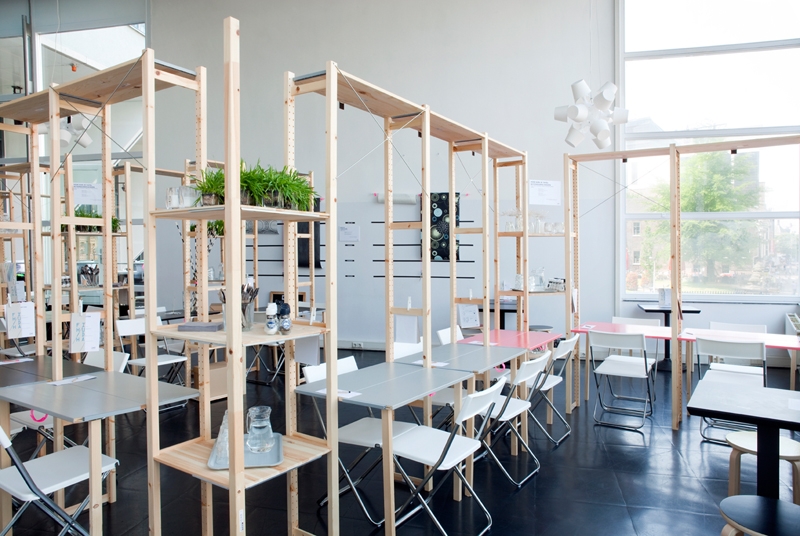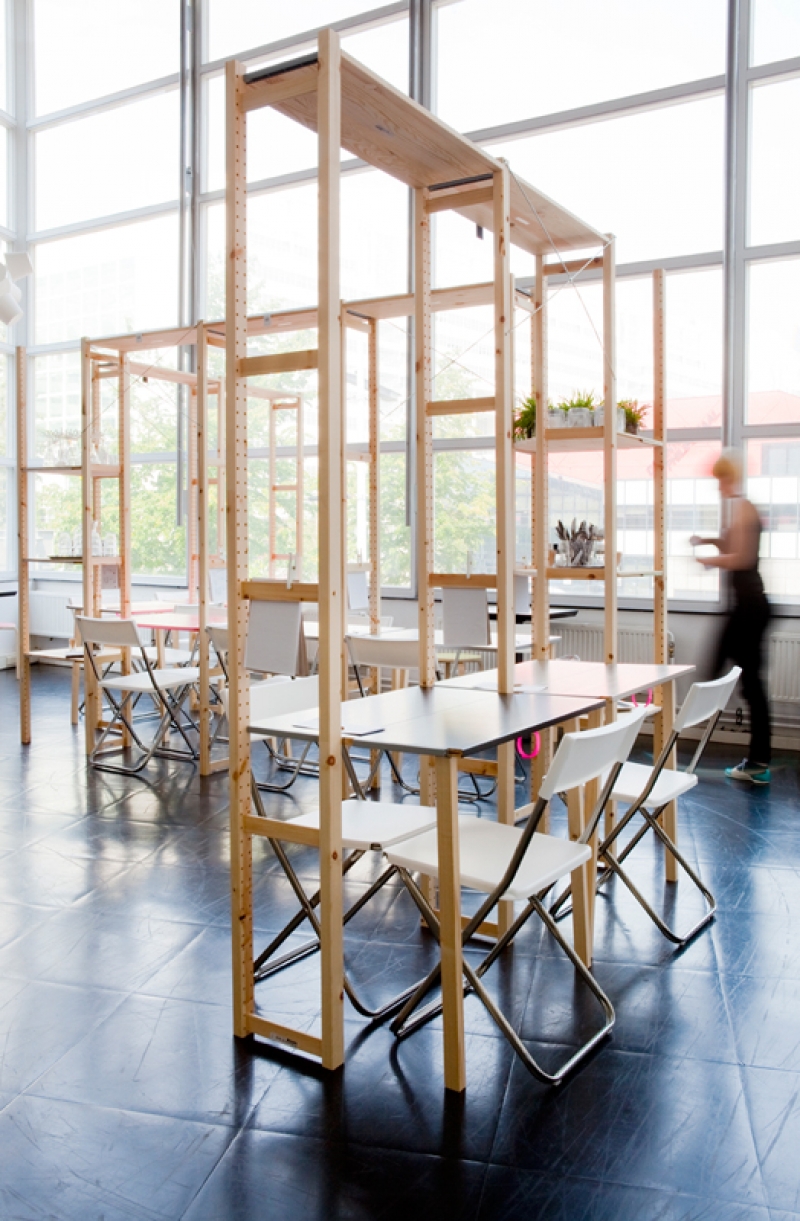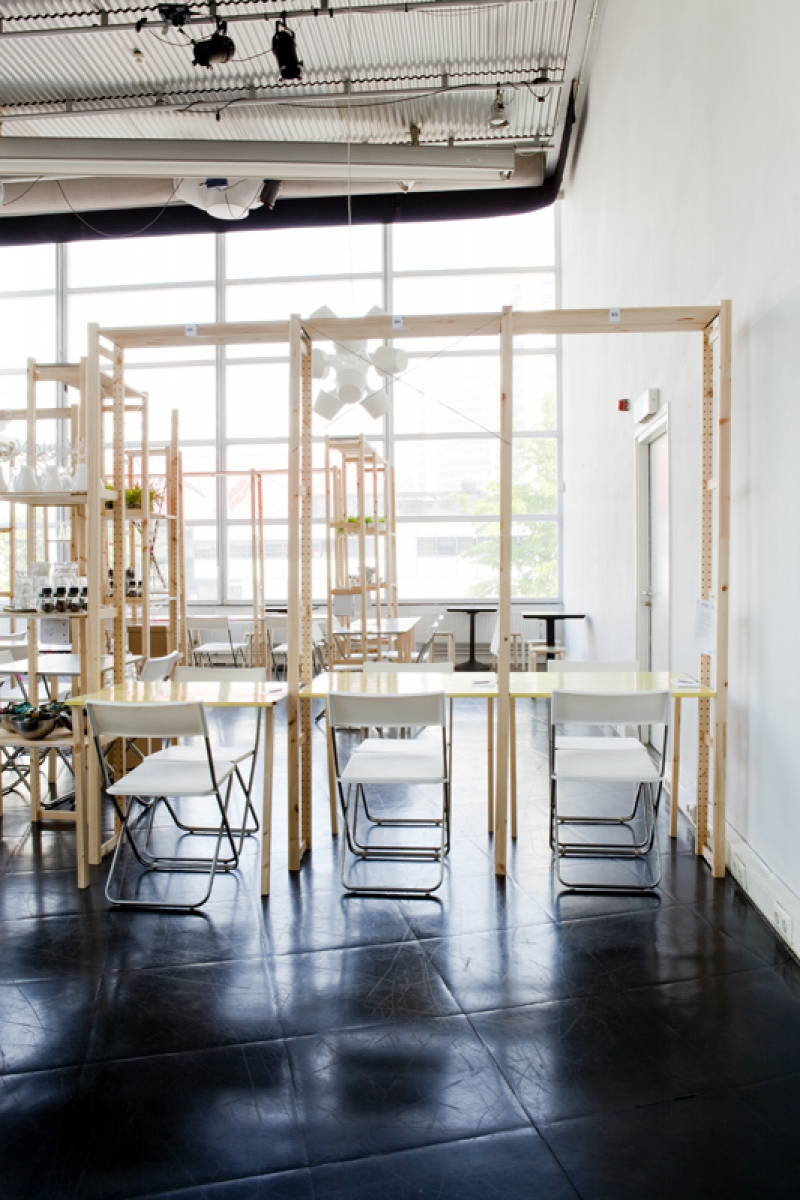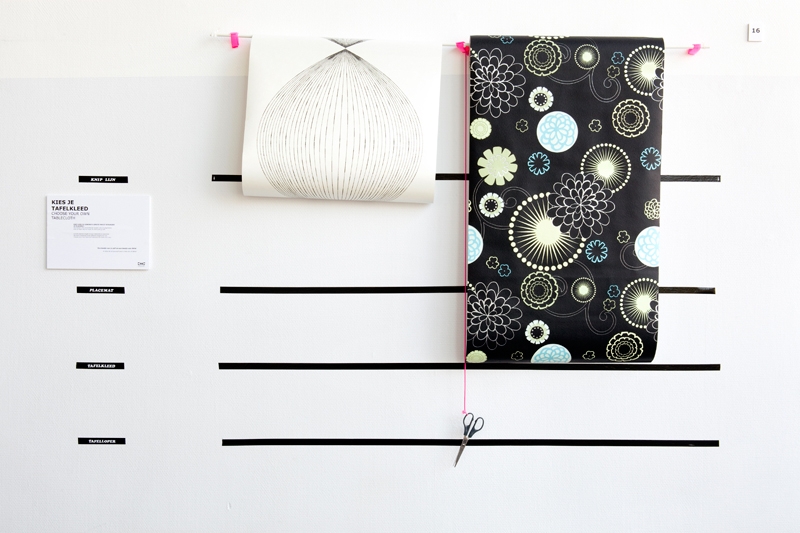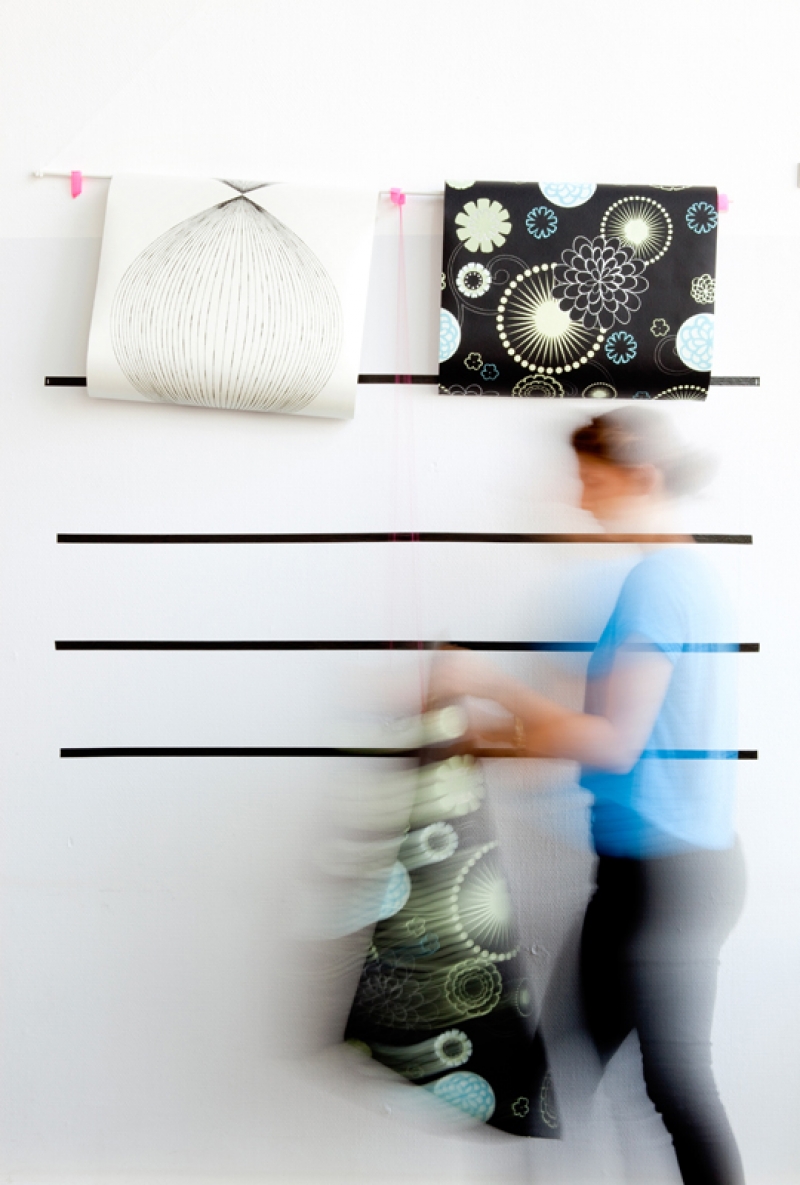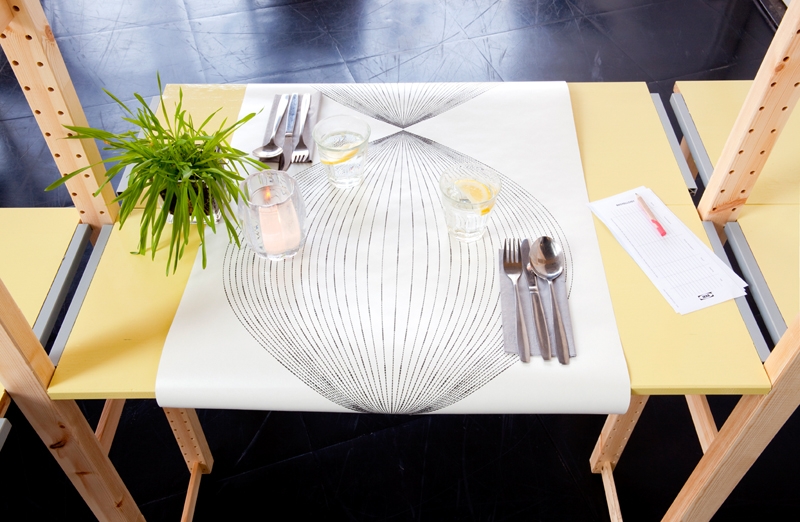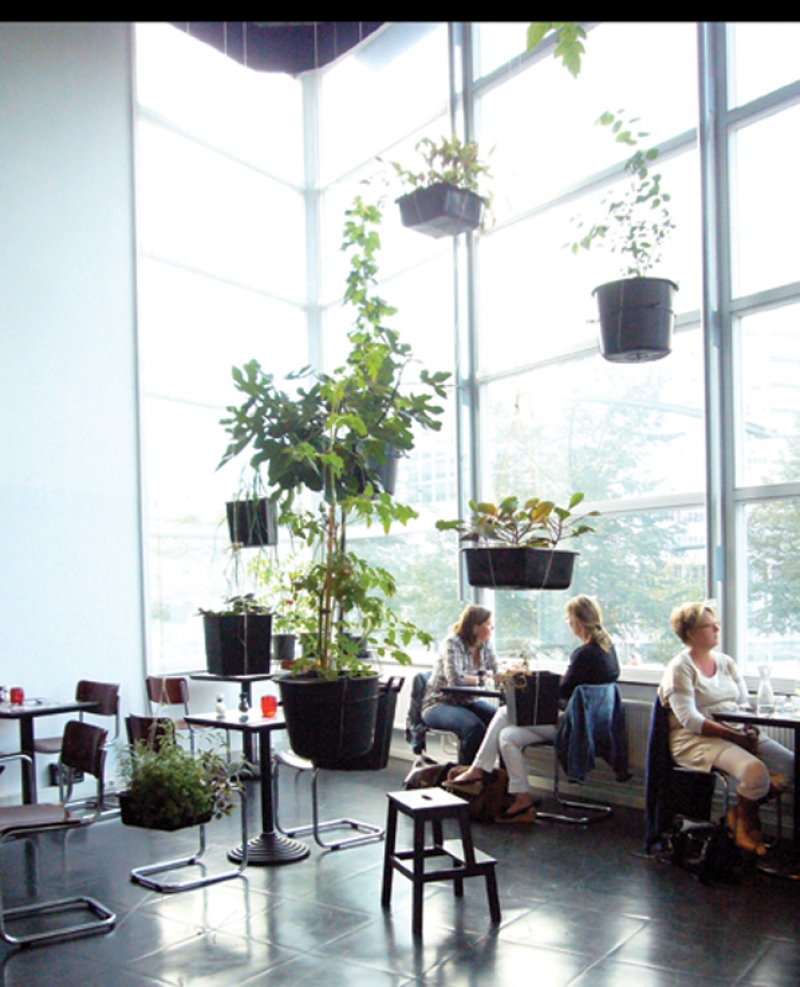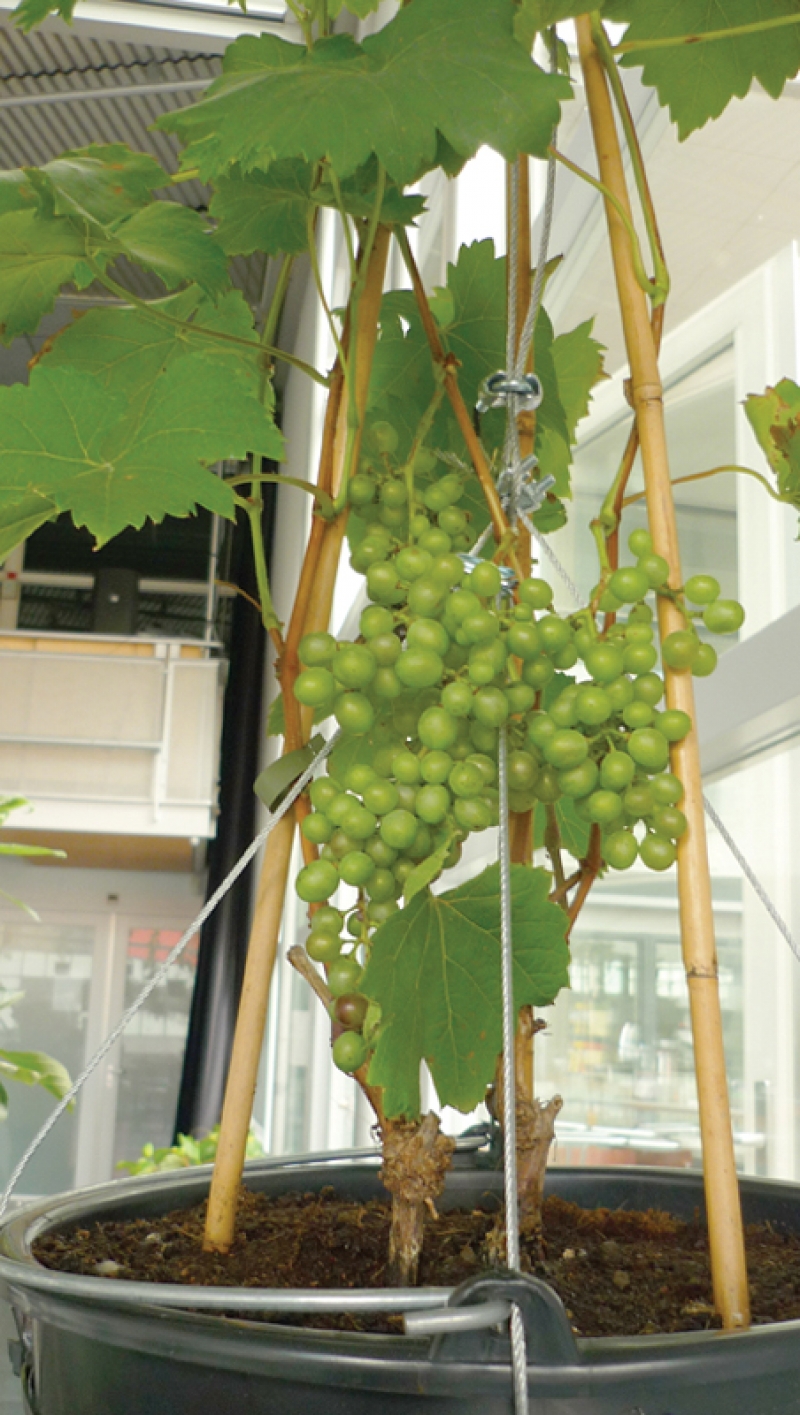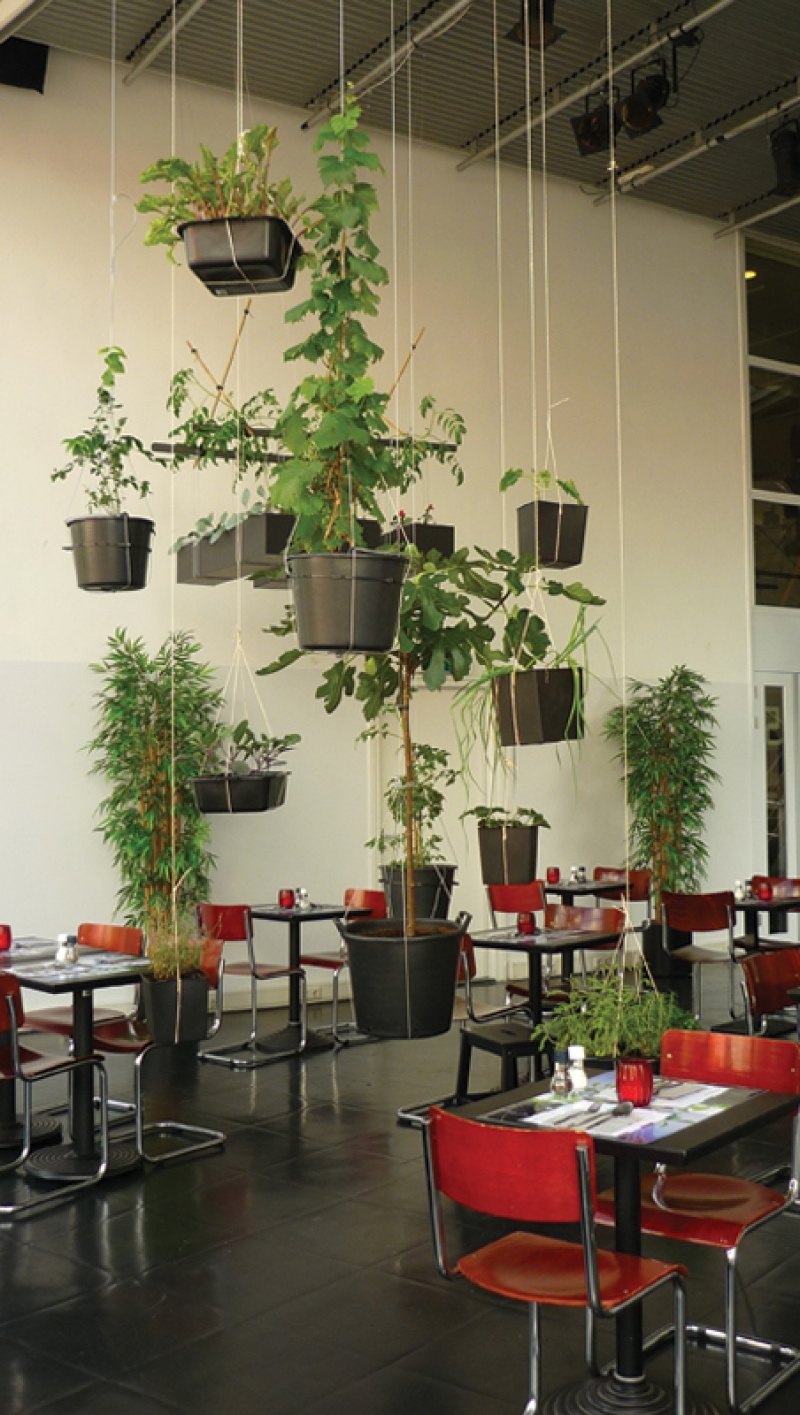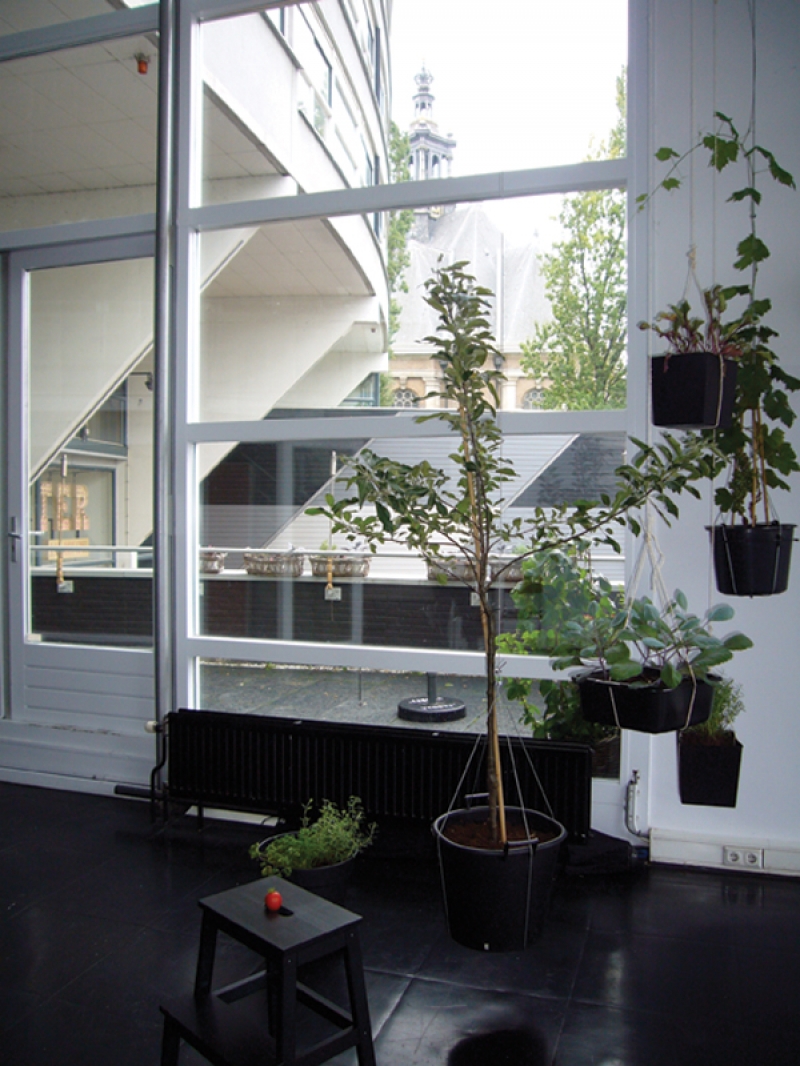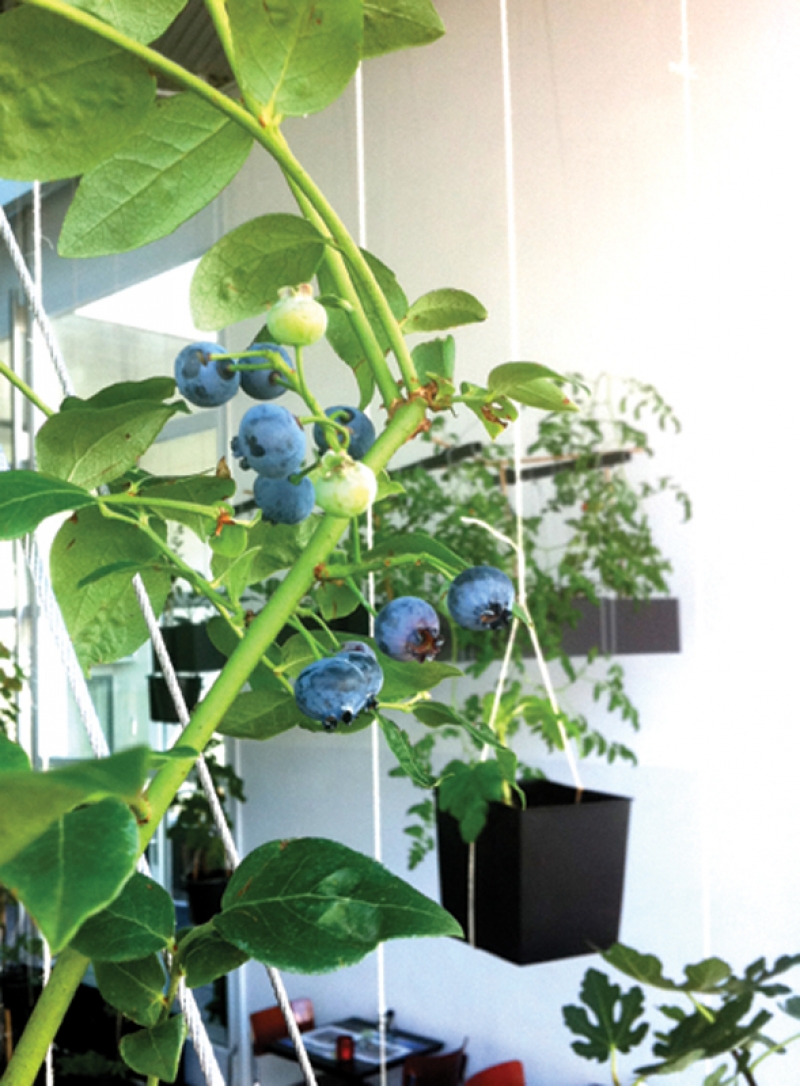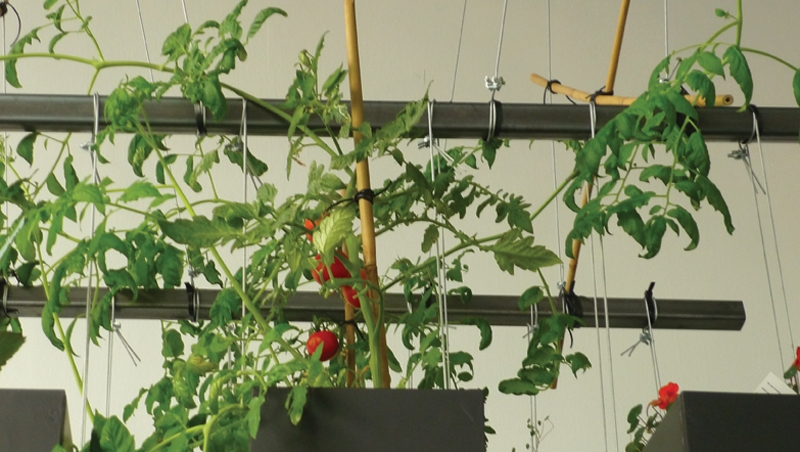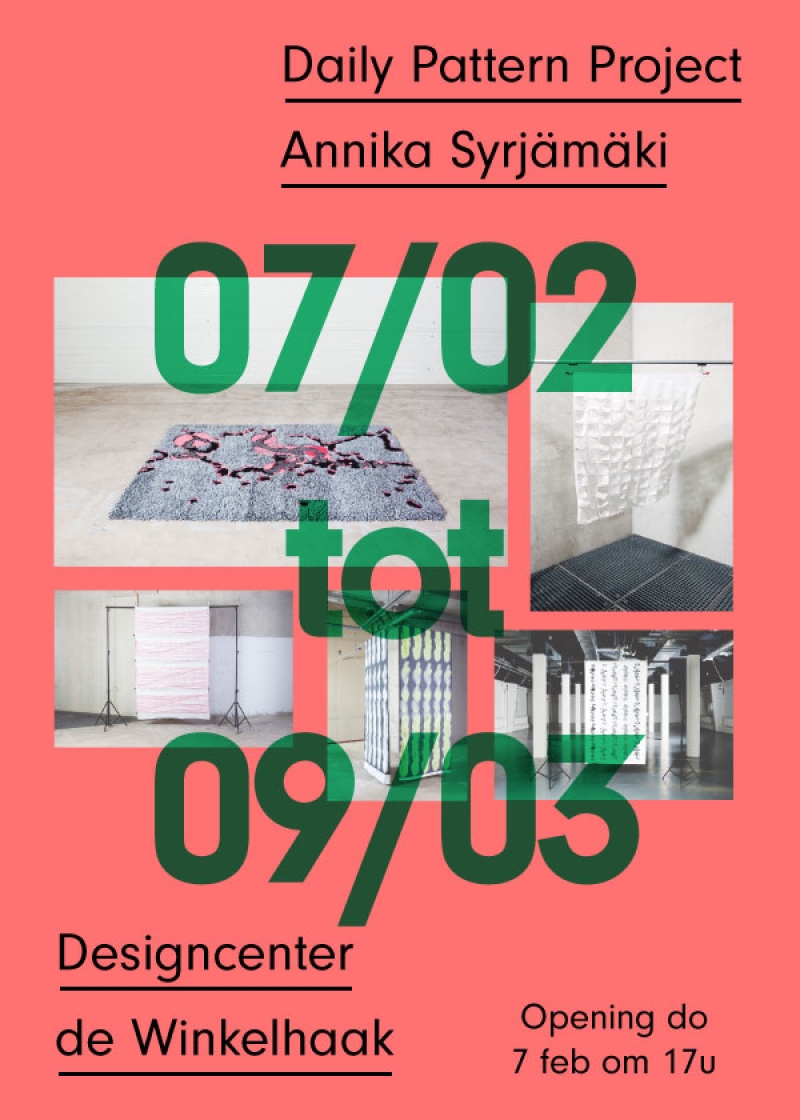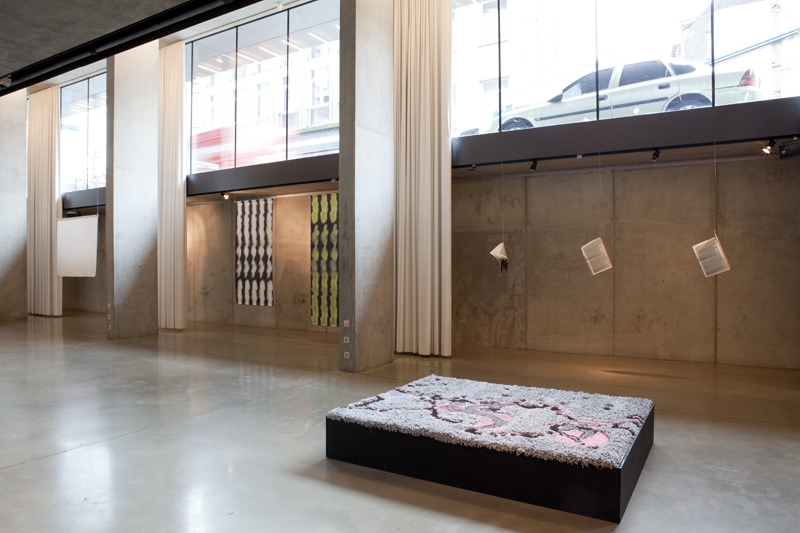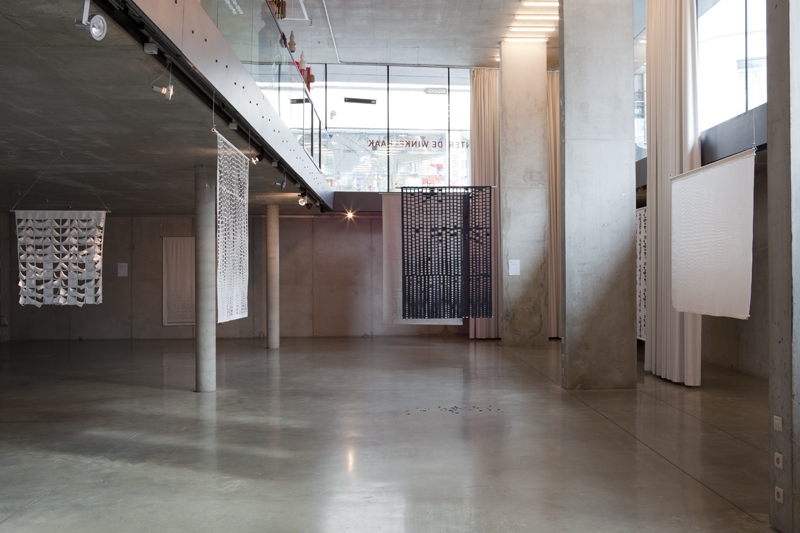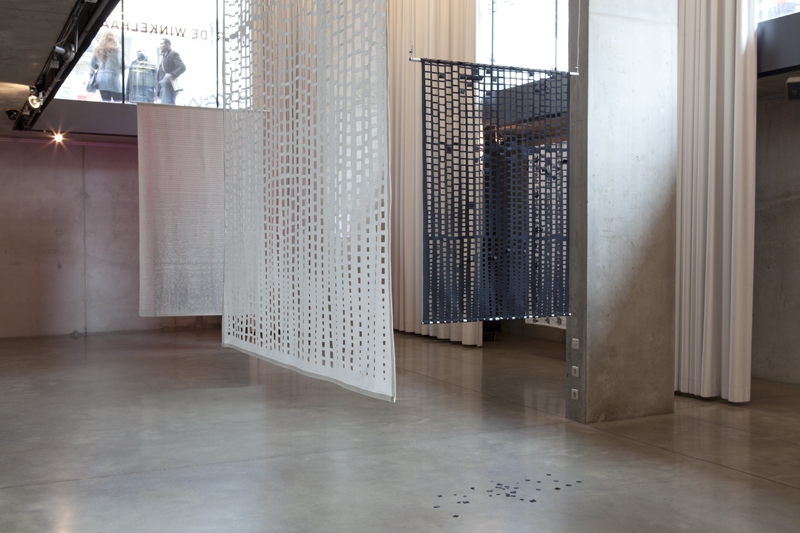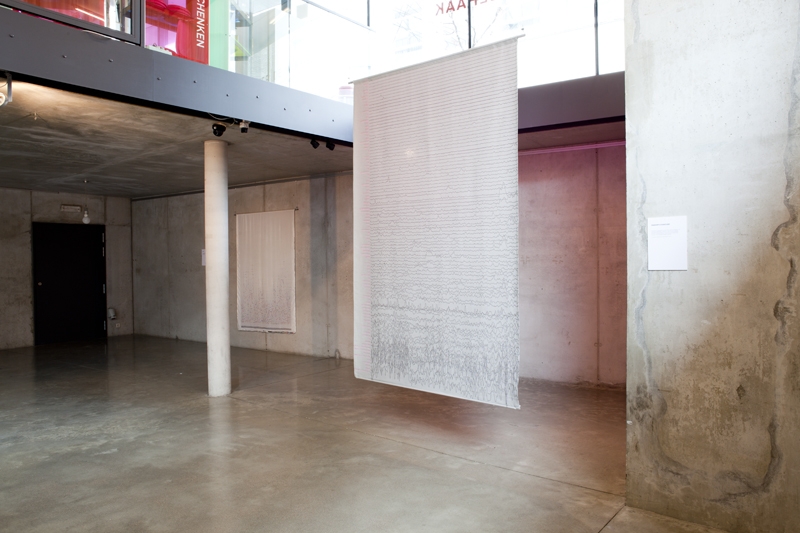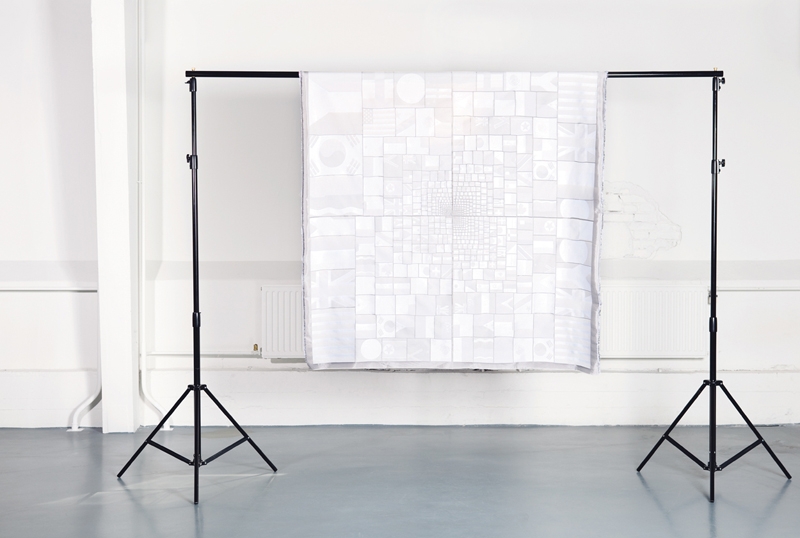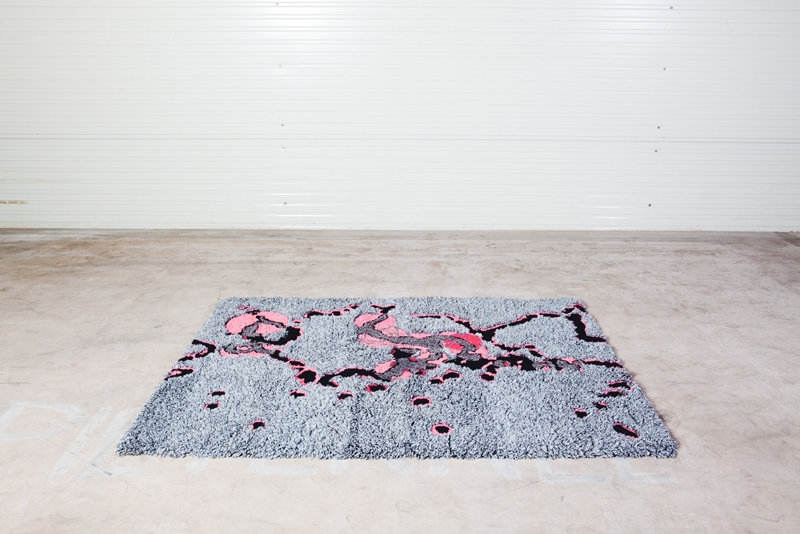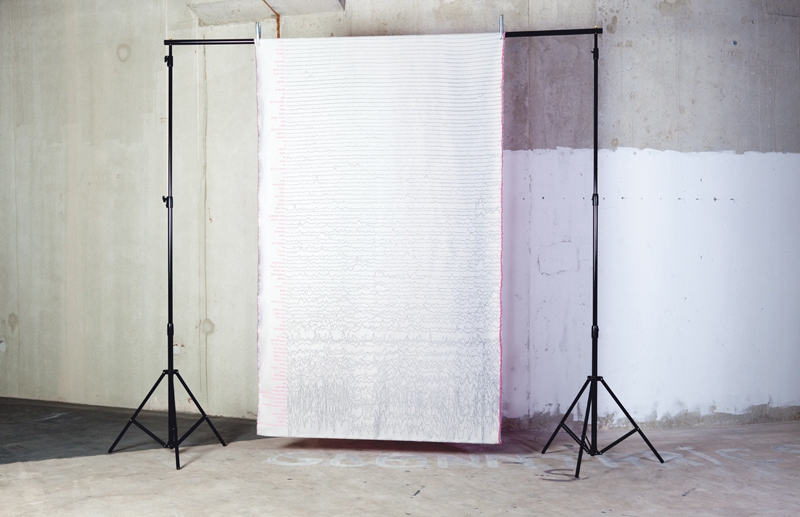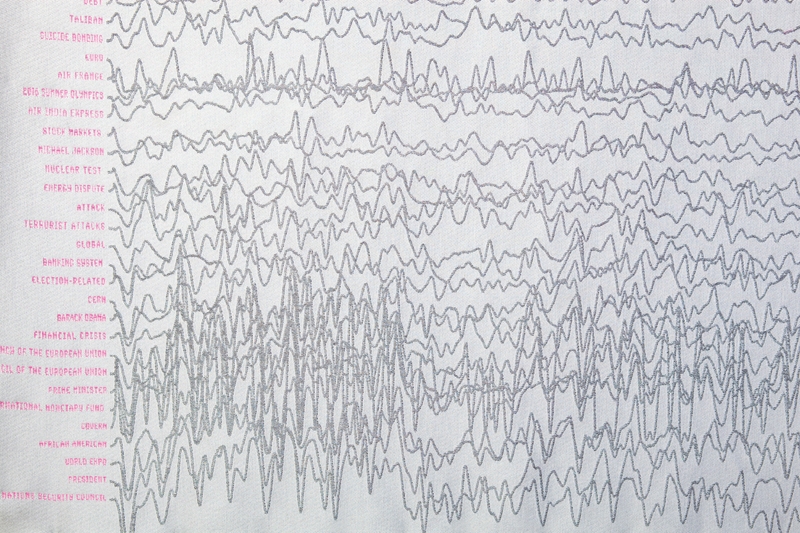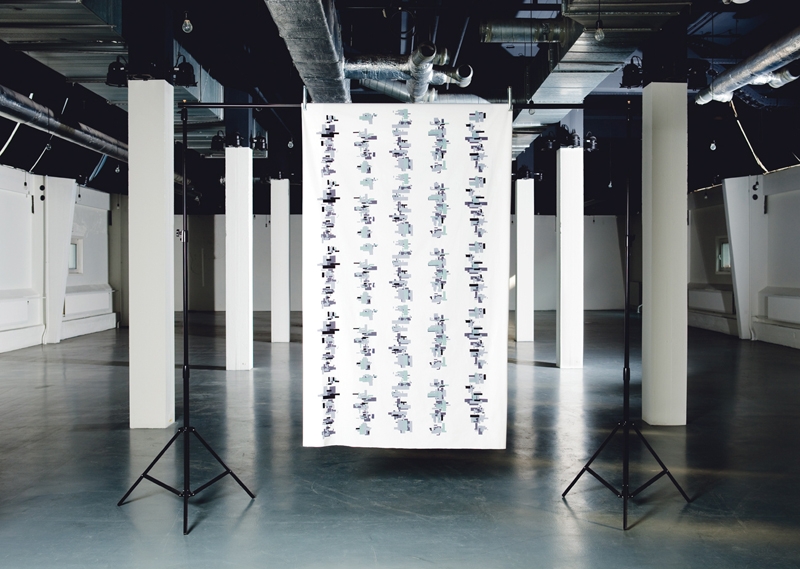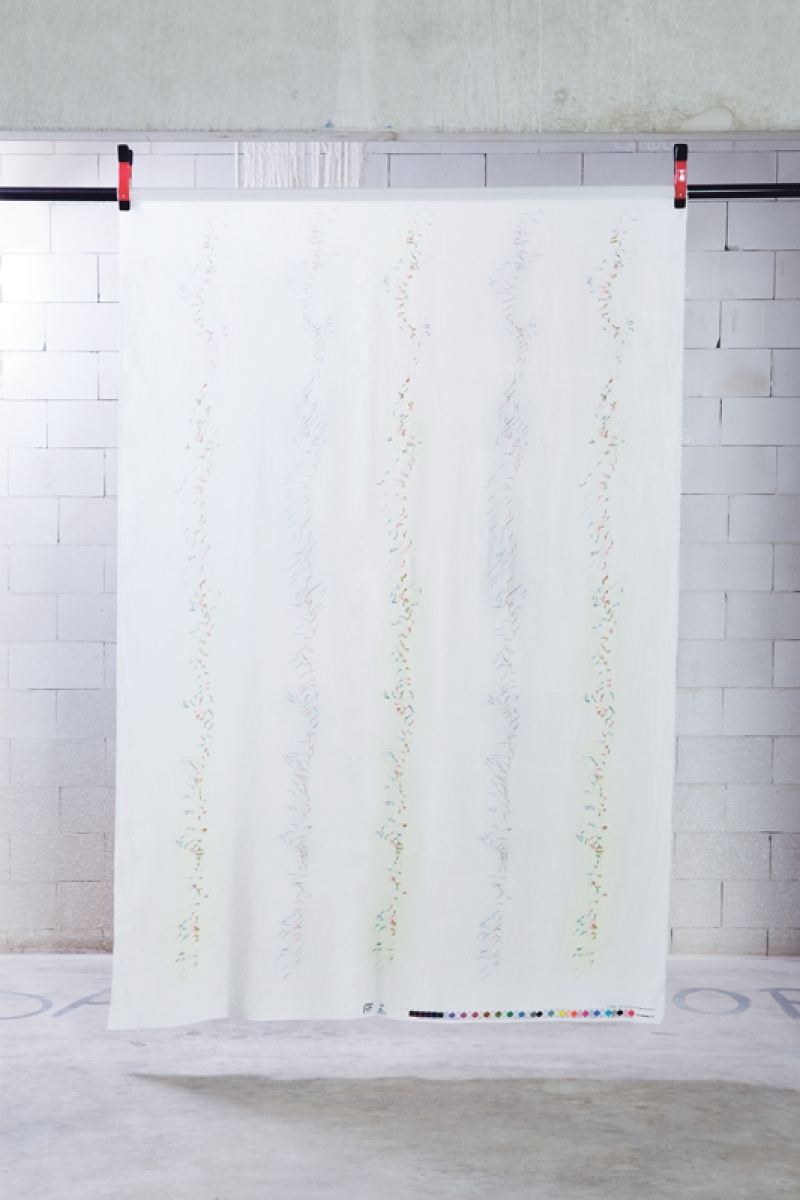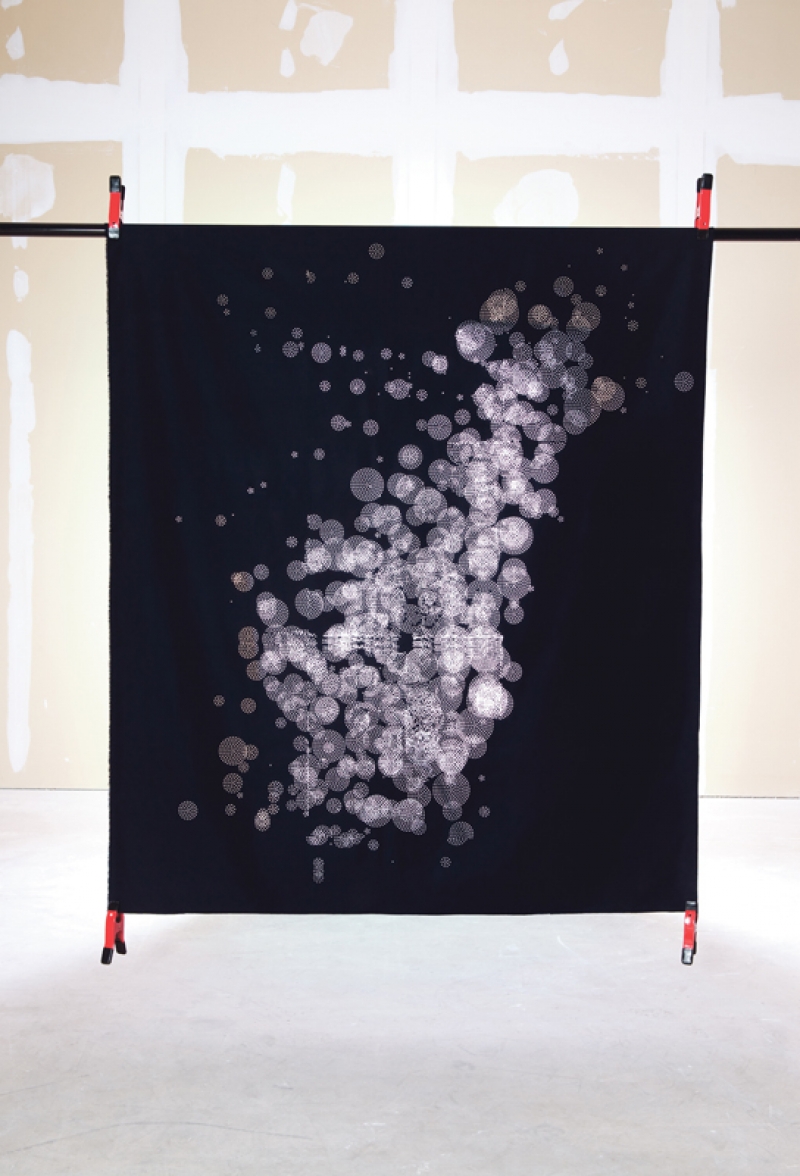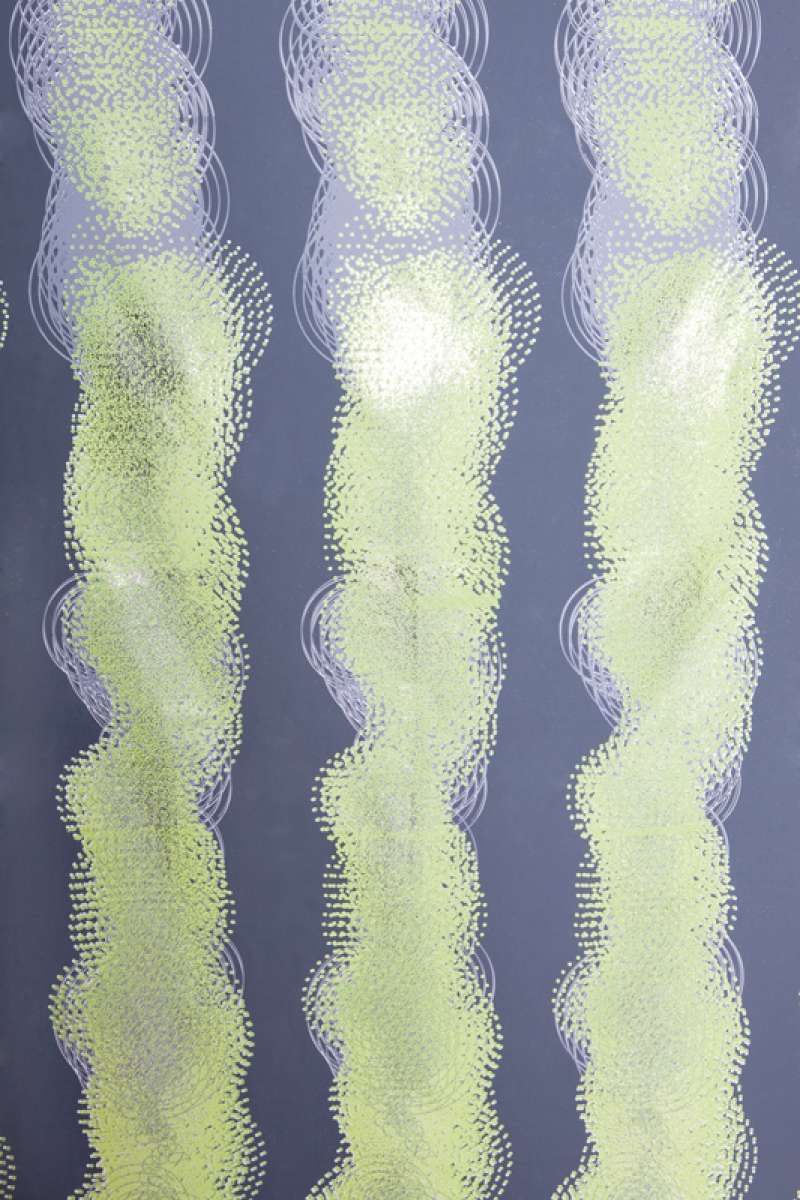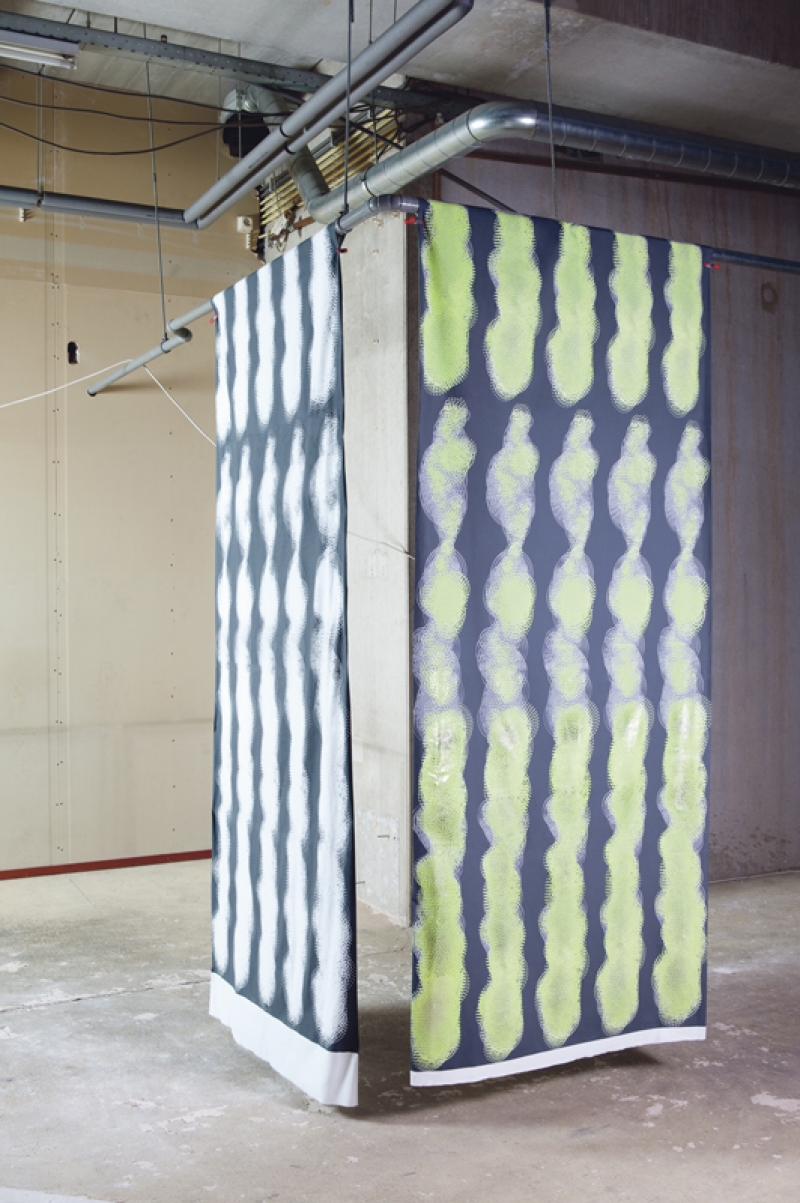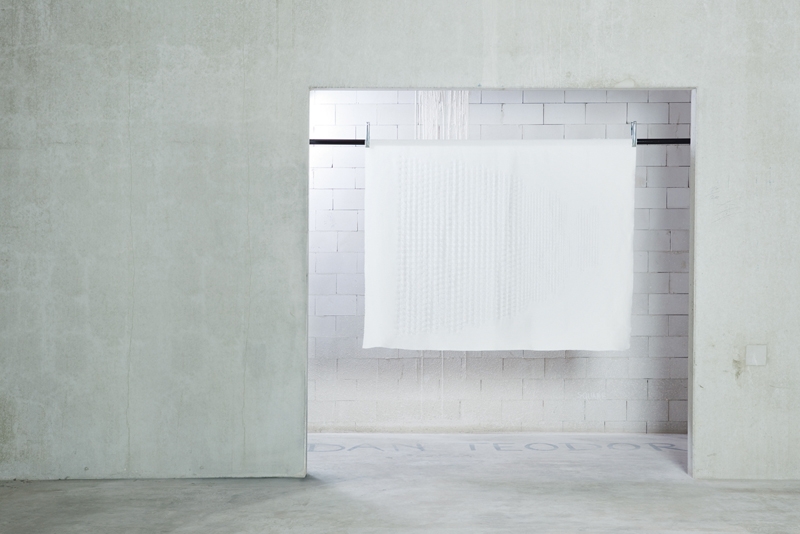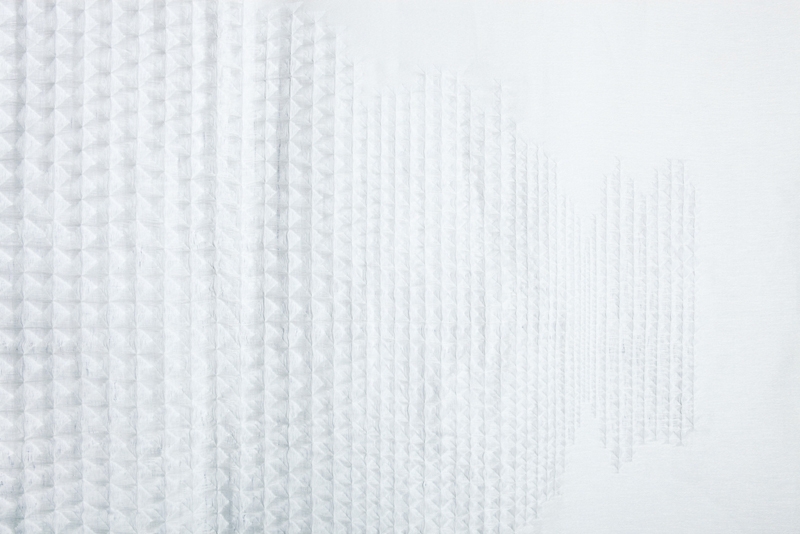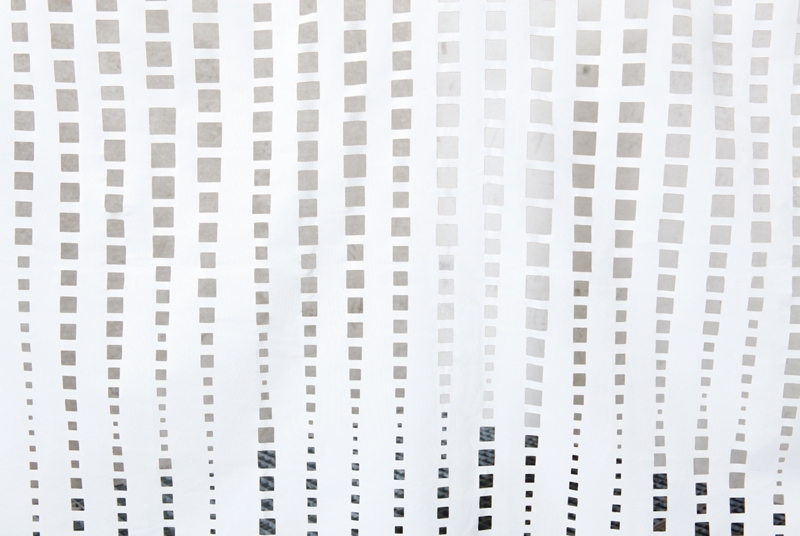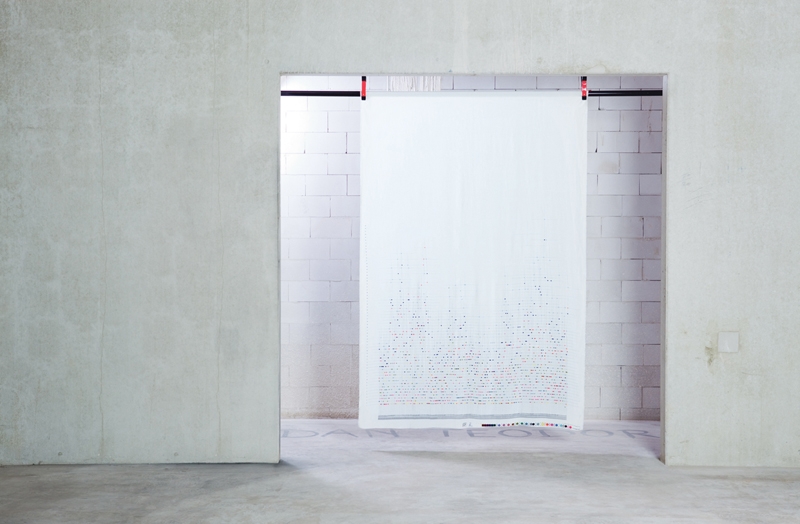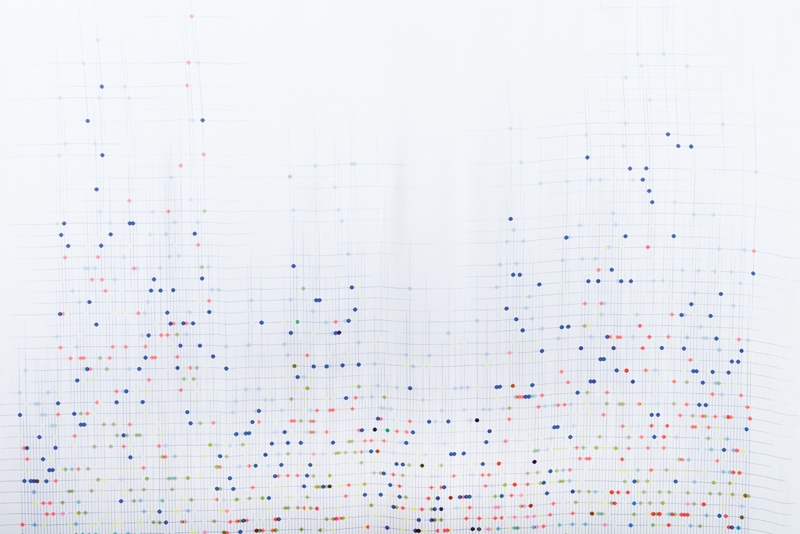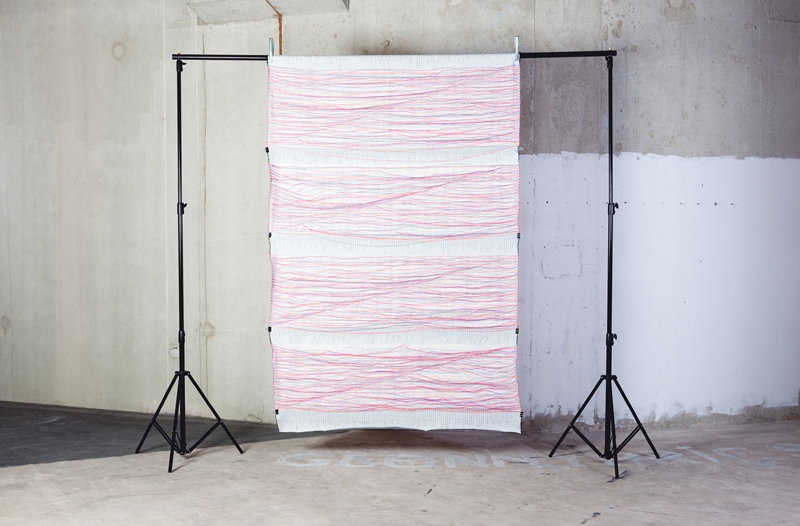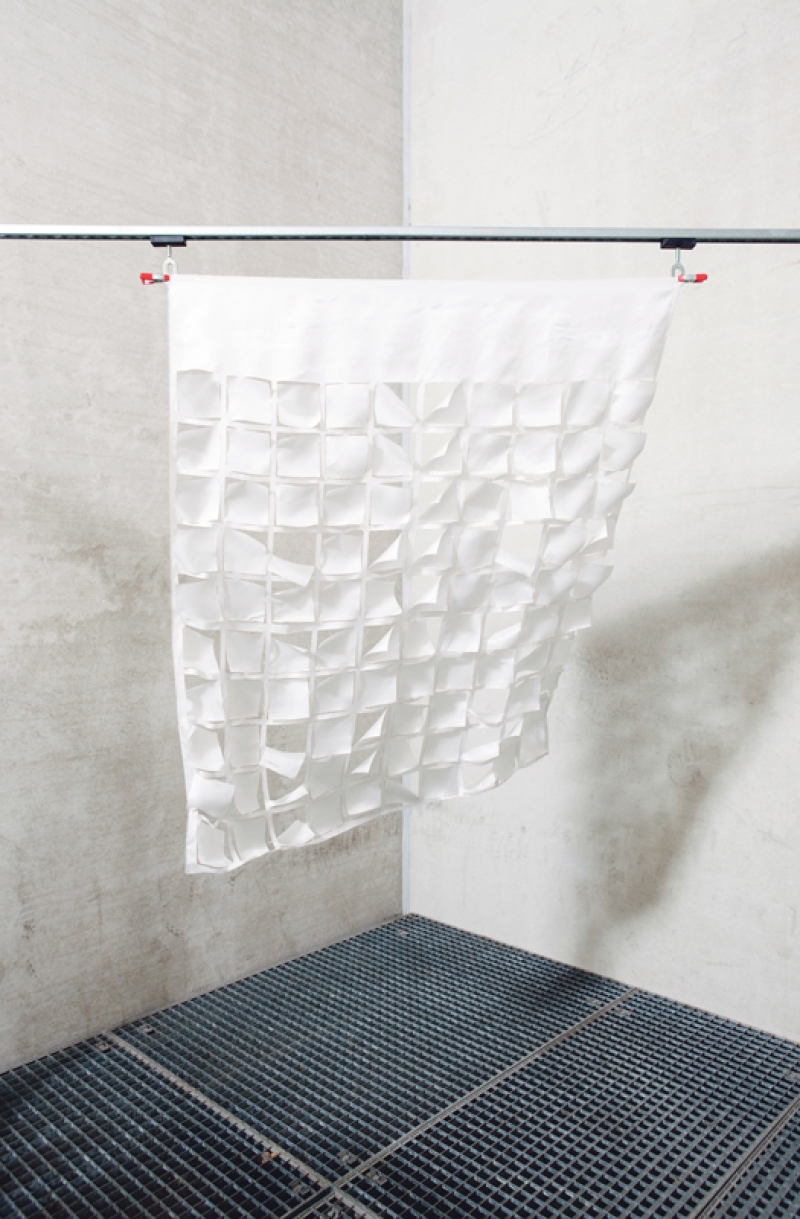Oatmeal Studio hacks Ikea
IkHa is a dining experience by Oatmeal Studio, where the concept of IKEA has been dismantled and translated into a restaurant interior. Itʼs not a self service restaurant in the usual sense of the word. Instead, visitors are invited to participate and customize their surroundings while dining. While ʻIKEA hackingʼ – or creating spaces using the budget-savvy Swedish brandʼs products in new ways– is a popular trend, the designers say they wanted to extend this concept.
IkHa is based on the showroom of IKEA itself. A maze of shelves and rooms to navigate, often multiple times as one reconsiders their choices, and then arrives home with their flat-packed goods to begin the assembly process.
Fortunately, they also sell Swedish Meatballs. Guests fill in their ordering forms with pencils and dinner is served on trays, delivered to the furniture construction at which theyʼve chosen to sit. Visitors can create their table setting from a selection of materials and cut their own tablecloth or placemat from a selection of wallpapers, ready to measure and cut.
“Even the Swedish meatballs are hacked”...and very nice, according to one patron of the restaurant.
One of IKEA slogans is “Big ideas for small spaces”, an important aspect of the IkHa restaurant.
Everything is collapsible and fold-able and when not in use can be quickly broken down to fit within a two square meter space.
This makes it ideal for temporary solutions, events, and festivals, according to the designers.Oatmeal Studio hacks Ikea
IkHa is a dining experience by Oatmeal Studio, where the concept of IKEA has been dismantled and translated into a restaurant interior. Itʼs not a self service restaurant in the usual sense of the word. Instead, visitors are invited to participate and customize their surroundings while dining. While ʻIKEA hackingʼ – or creating spaces using the budget-savvy Swedish brandʼs products in new ways– is a popular trend, the designers say they wanted to extend this concept.
IkHa is based on the showroom of IKEA itself. A maze of shelves and rooms to navigate, often multiple times as one reconsiders their choices, and then arrives home with their flat-packed goods to begin the assembly process.
Fortunately, they also sell Swedish Meatballs. Guests fill in their ordering forms with pencils and dinner is served on trays, delivered to the furniture construction at which theyʼve chosen to sit. Visitors can create their table setting from a selection of materials and cut their own tablecloth or placemat from a selection of wallpapers, ready to measure and cut.
“Even the Swedish meatballs are hacked”...and very nice, according to one patron of the restaurant.
One of IKEA slogans is “Big ideas for small spaces”, an important aspect of the IkHa restaurant.
Everything is collapsible and fold-able and when not in use can be quickly broken down to fit within a two square meter space.
This makes it ideal for temporary solutions, events, and festivals, according to the designers.

